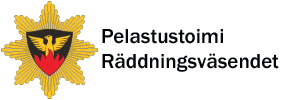

Prehospital emergency medical care
Prehospital emergency medical services
Prehospital emergency medical services refer to providing urgent treatment to a patient who has fallen ill suddenly or received injuries. They include transporting the patient to a health care unit providing urgent and emergency care services if necessary. The key task of the prehospital emergency care unit personnel is to assess the patient’s need for treatment, to direct the patient to the correct place of care, and to plan the organisation of care with a health care unit providing urgent and emergency care services.
When somebody falls ill suddenly or is injured, you should call the emergency number 112 for an ambulance, wherever you are in the country. The Emergency Response Centres assess the urgency of the mission and the resources available for it.
The Ministry of Social Affairs and Health is responsible for drafting legislation on prehospital emergency medical care and for the general direction and oversight of the activities. Detailed provisions on the tasks of the prehospital emergency medical services are laid down in a Ministry of Social Affairs and Health Decree.
Hospital districts organise prehospital emergency medical services and determine the service standard
Hospital districts organise the prehospital emergency medical services in their areas. They can provide the services themselves, provide them together with the rescue services or another hospital district, or outsource the services to some other service provider.
The hospital district makes a decision on the service standard of prehospital emergency medical care. The content of the emergency medical services is defined in this decision, ensuring that they are delivered efficiently and appropriately and dimensioned correctly.
The planning and delivery of emergency medical services must take place in cooperation with health care units providing urgent and emergency care services, making sure the services add up to an effective regional system.
A fundamental part of rescue department operations
Emergency medical care provided by rescue departments
The rescue departments organise the provision of regional emergency medical services in cooperation with the hospital districts. The aim of the rescue departments is to provide high-quality, versatile and customer-oriented emergency medical services. The provision of emergency medical care is a fundamental and natural part of rescue departments’ daily work. The emergency medical services provided by rescue departments are usually based on a system of levels. The purpose of this arrangement is to always bring the closest appropriate form of assistance to the person in need of help, ranging from first response activities to advanced medical emergency care provided by a physician. Look up the emergency medical services provided by the rescue department in your area.

Levels of emergency medical care
First response unit
The most common first response units are fire engines. Fire engine personnel have been trained to assess the patient's condition, to provide emergency first aid and to initiate the prehospital emergency medical care of a lifeless person before the arrival of an ambulance. While a first response unit has the basic ambulance equipment, it does not transport patients.
Basic life support (BLS) ambulance
BLS ambulances mostly carry out non-urgent missions in which the patient's condition is stable. A BLS ambulance is staffed by two emergency medical technicians. They have the professional skills needed to provide care and transport patients following care instructions.
Advanced life support (ALS) ambulance
An ALS ambulance has the capability to start more demanding treatment of a patient and transport patients while securing their vital functions. One of the team must be a qualified paramedic or nurse. They may be paired with an emergency medical technician.
EMS field commander
An EMS field commander directs and coordinates ambulances called to prehospital medical care missions in cooperation with the Emergency Response Centre. The field commander looks after EMS incident management in multi-patient situations, major accidents and multi-authority tasks, and they have a more comprehensive selection of medicines at their disposal than an ALS ambulance.
EMS unit with a physician and FinnHEMS medical helicopter
The task of an EMS unit with a physician is to bring physician level emergency medical care to the patients. Even if the physician were not present at the scene, the paramedics keep in close contact with him or her while treating a patient. When a physician is present, the paramedics assist him or her. In a helicopter, paramedics can additionally be responsible for such tasks as navigation and safety during landing.
Read more:
- Ministry of Social Affairs and Health Decree on Prehospital Emergency Medical Services 585/2017 (in Finnish)
- Ministry of Social Affairs and Health
- FinnHEMS, administrative unit of medical helicopter operations (in Finnish)


